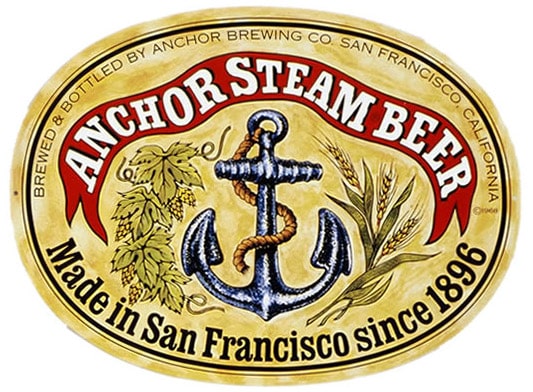The Closure Of Anchor Brewing Company: What Happened?

Table of Contents
Anchor Brewing's Financial Difficulties
The closure of Anchor Brewing wasn't a sudden event; it was the culmination of years of mounting financial challenges. Declining sales and a significant debt burden ultimately proved insurmountable.
Declining Sales and Profits
Anchor Brewing experienced a steady decrease in sales over the past several years. While precise figures aren't publicly available in detail, industry reports suggest a substantial percentage drop in revenue. Several factors contributed to this decline:
- Increased competition from larger craft breweries and global brands: The craft beer market exploded in size, leading to fierce competition from both established large breweries expanding their craft offerings and a multitude of smaller, independent breweries. These competitors often offered a wider variety of styles and aggressive pricing.
- Shifting consumer preferences towards specific beer styles: The popularity of certain beer styles, such as IPAs, surged, overshadowing Anchor's more traditional offerings. Consumer tastes became increasingly diverse and experimental, demanding novel flavors and brewing techniques.
- Rising production and distribution costs: The costs associated with brewing, packaging, and distributing beer steadily increased, squeezing profit margins for many breweries, including Anchor. Inflation and supply chain disruptions exacerbated these challenges.
- Ineffective marketing strategies: Some argue that Anchor Brewing failed to adapt its marketing strategies to keep pace with the evolving craft beer landscape. A lack of innovation in their marketing approach may have contributed to decreased brand visibility and consumer engagement.
Debt and Financial Burden
Anchor Brewing's financial woes were further complicated by a substantial debt burden. The acquisition by Sapporo Holdings in 1989, while initially beneficial, may have ultimately constrained the brewery's financial flexibility.
- Acquisition by Sapporo Holdings and the subsequent financial constraints: While the acquisition provided resources at the time, it also meant Anchor operated under the financial strategies and priorities of a larger, international corporation.
- Failure to secure sufficient investment for modernization or expansion: A lack of sufficient investment may have hindered Anchor's ability to upgrade its brewing facilities, expand its product lines, or enhance its distribution network. Modernization is crucial in a competitive market.
- Unprofitable product lines or distribution models: Certain product lines or distribution strategies may have proven less profitable than others, contributing to overall financial strain.
The Changing Landscape of the Craft Beer Industry
Anchor Brewing's struggles weren't solely its own making; the craft beer industry itself underwent a dramatic transformation.
Increased Competition
The craft beer market experienced explosive growth, leading to unprecedented levels of competition.
- The rise of numerous smaller craft breweries: Countless smaller breweries entered the market, each vying for a share of the consumer base. This intensified competition for shelf space and consumer attention.
- The entry of large breweries into the craft beer sector: Major breweries began acquiring or launching their craft beer brands, further increasing competition and altering the market dynamics.
- The growing popularity of IPAs and other specific styles, overshadowing Anchor's traditional offerings: The phenomenal rise in popularity of certain beer styles, such as India Pale Ales (IPAs), left some breweries, like Anchor, with more traditional styles struggling to maintain market share.
Evolving Consumer Preferences
Consumer preferences in the craft beer world changed significantly, demanding more variety and innovation.
- The shift towards trendy craft beer styles and experimental brews: Consumers increasingly sought out unique and experimental beers, pushing the boundaries of traditional brewing styles.
- Growing consumer demand for variety and novel experiences: The emphasis shifted from brand loyalty to exploring a vast range of beer styles, flavors, and experiences.
- Increased interest in local, hyper-local breweries: A growing preference for supporting local businesses led many consumers to favor smaller, local breweries over larger, established brands.
Sapporo Holdings' Role in Anchor Brewing's Closure
Sapporo Holdings, the parent company, played a significant role in the events leading to Anchor Brewing's closure.
Management Decisions and Strategies
Sapporo's ownership and management strategies may have contributed to Anchor's decline.
- Potential lack of investment in the brand: Some critics argue that Sapporo failed to provide sufficient investment to support Anchor's growth and adaptation to the changing market.
- Unclear strategic direction from Sapporo for Anchor’s future: A lack of a clear vision for Anchor's future within the Sapporo portfolio might have hampered the brewery's ability to compete effectively.
- Overemphasis on cost-cutting measures which negatively impacted quality or branding: Cost-cutting measures, while understandable in a challenging market, may have inadvertently compromised the quality of Anchor's products or diluted its brand image.
The Ultimate Decision to Close
The final decision to close Anchor Brewing was a culmination of the factors discussed above.
- Assessment of financial viability: Sapporo conducted a thorough assessment of Anchor's financial viability and concluded that continued operation was unsustainable.
- Evaluation of potential sale or restructuring options: It's likely that Sapporo explored various options, such as selling the brewery or restructuring its operations, before deciding on closure.
- Official statement from Sapporo Holdings regarding the closure: Sapporo issued an official statement explaining the reasons for the closure, citing financial difficulties and the competitive landscape.
Conclusion
The closure of Anchor Brewing Company marks a significant moment in the history of American craft beer. While declining sales, intense competition, and evolving consumer tastes undoubtedly played a role, the ultimate responsibility for the closure falls on a combination of factors, including Sapporo's management decisions and the brewery's inability to adapt to the dynamic craft beer market. Understanding the factors contributing to Anchor's demise offers valuable lessons for other breweries and underscores the challenges of maintaining relevance and profitability in a constantly evolving industry. Learning from the Anchor Brewing Company closure can help other craft breweries navigate the complexities of the craft beer market and avoid a similar fate. Let's remember the legacy of Anchor Brewing and the impact it had on the craft beer world. The story of Anchor serves as a cautionary tale for all in the craft beer industry, highlighting the importance of adaptability, innovation, and sound financial management.

Featured Posts
-
 Arsenals Champions League Challenge Souness Highlights A Formidable Opponent
May 03, 2025
Arsenals Champions League Challenge Souness Highlights A Formidable Opponent
May 03, 2025 -
 Milwaukee Rental Market A Cutthroat Competition
May 03, 2025
Milwaukee Rental Market A Cutthroat Competition
May 03, 2025 -
 Sydney Harbour And Beyond Understanding The Rise Of Chinese Maritime Presence
May 03, 2025
Sydney Harbour And Beyond Understanding The Rise Of Chinese Maritime Presence
May 03, 2025 -
 Kivalo Minosegu Baromfihus Valassza A Mecsek Baromfi Kft Kme Vedjegyes Termekeit
May 03, 2025
Kivalo Minosegu Baromfihus Valassza A Mecsek Baromfi Kft Kme Vedjegyes Termekeit
May 03, 2025 -
 Joseph Tf 1 Analyse De La Serie A Succes
May 03, 2025
Joseph Tf 1 Analyse De La Serie A Succes
May 03, 2025
